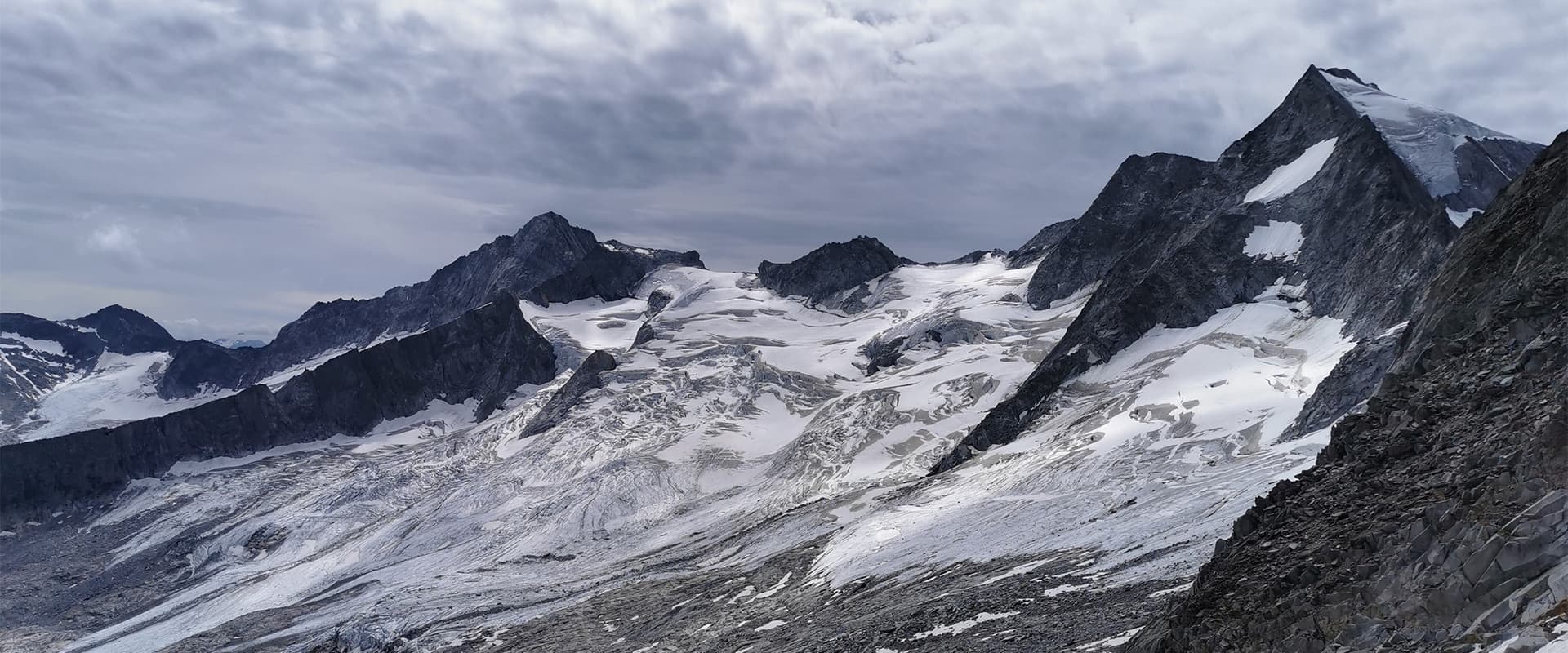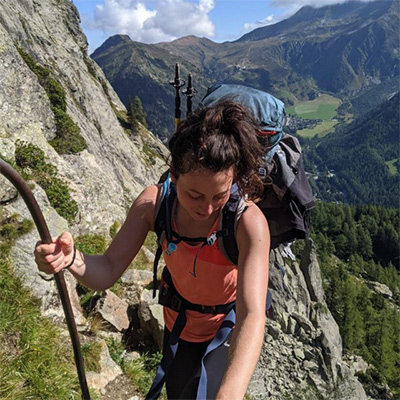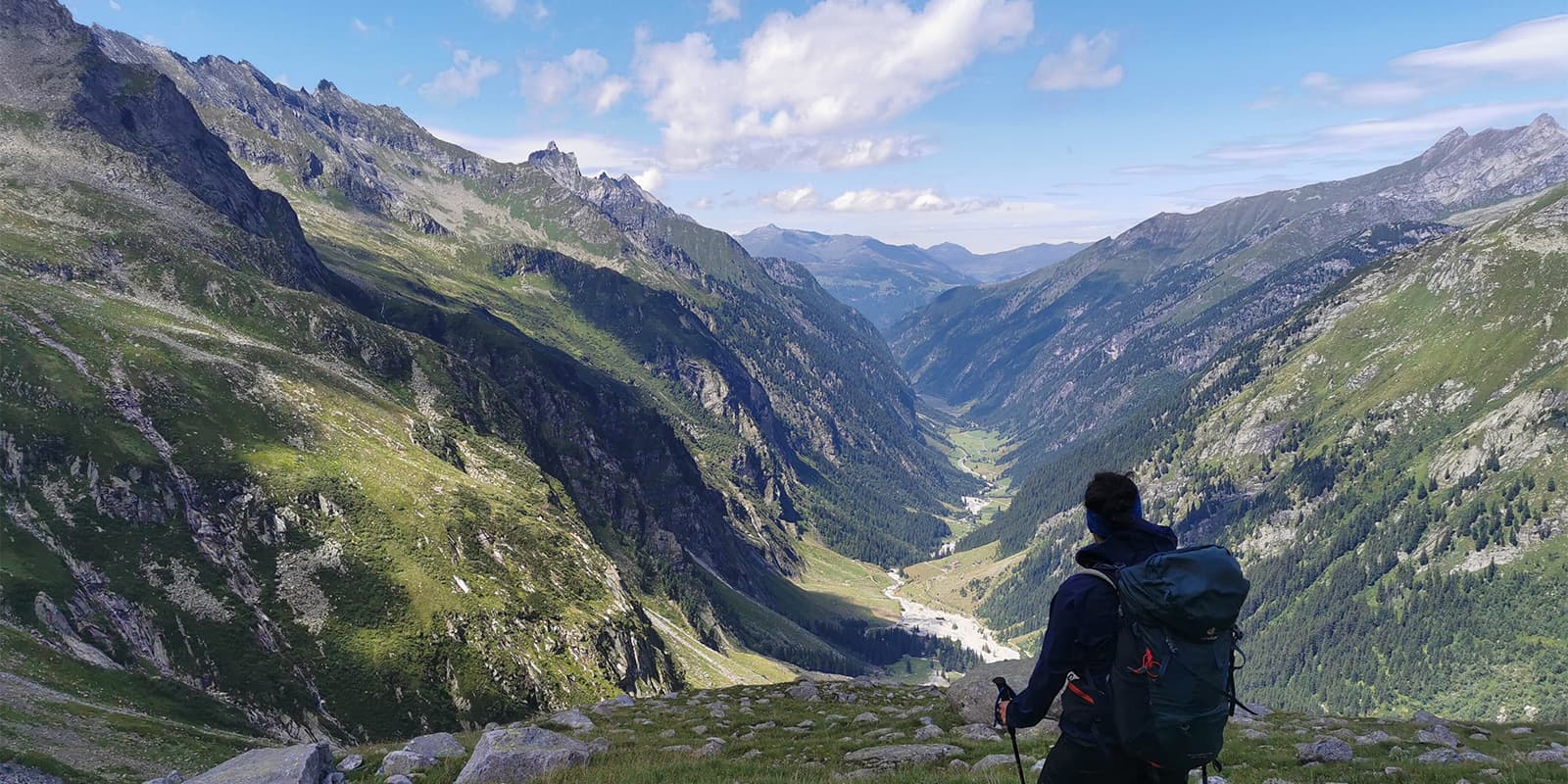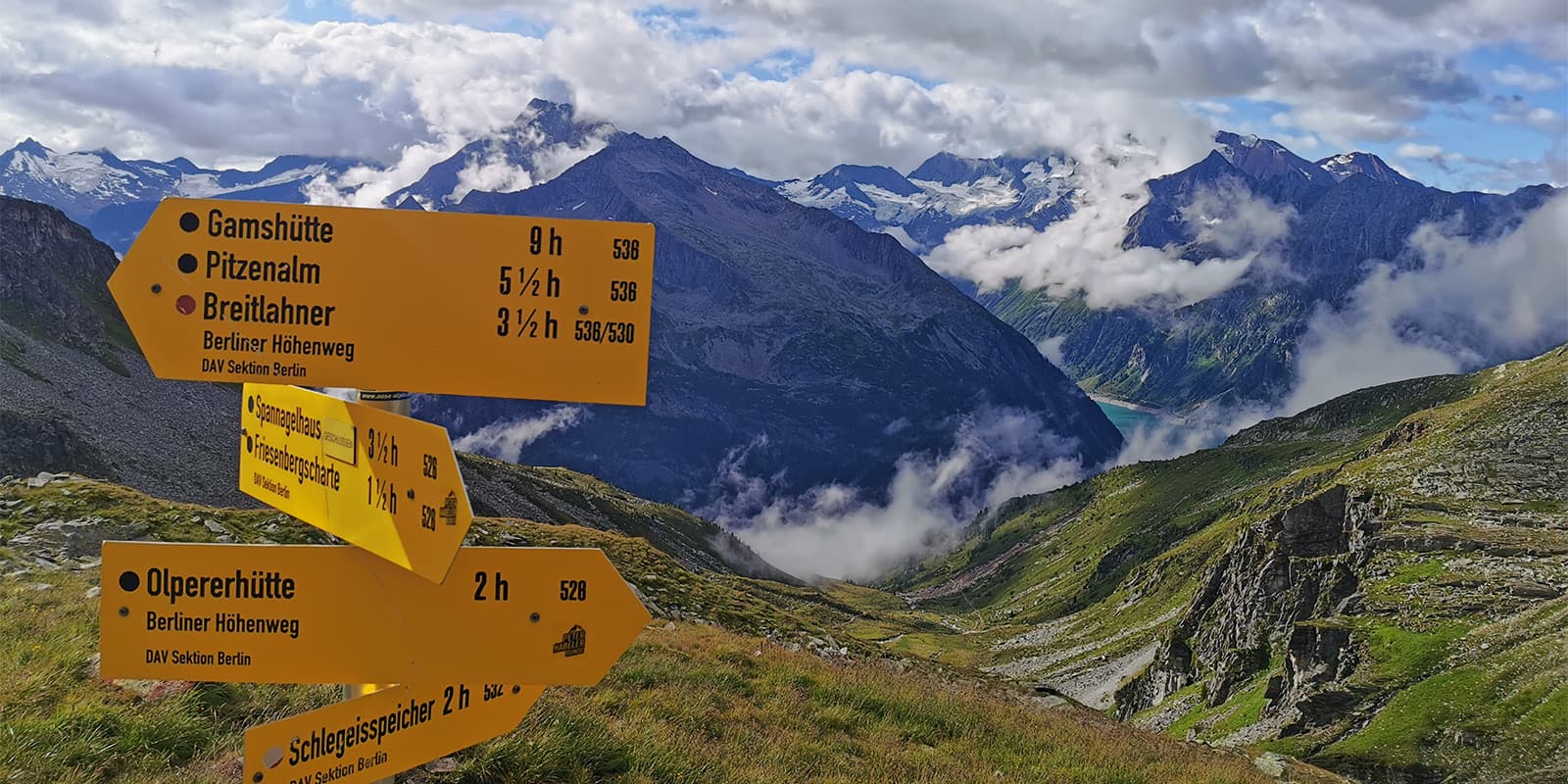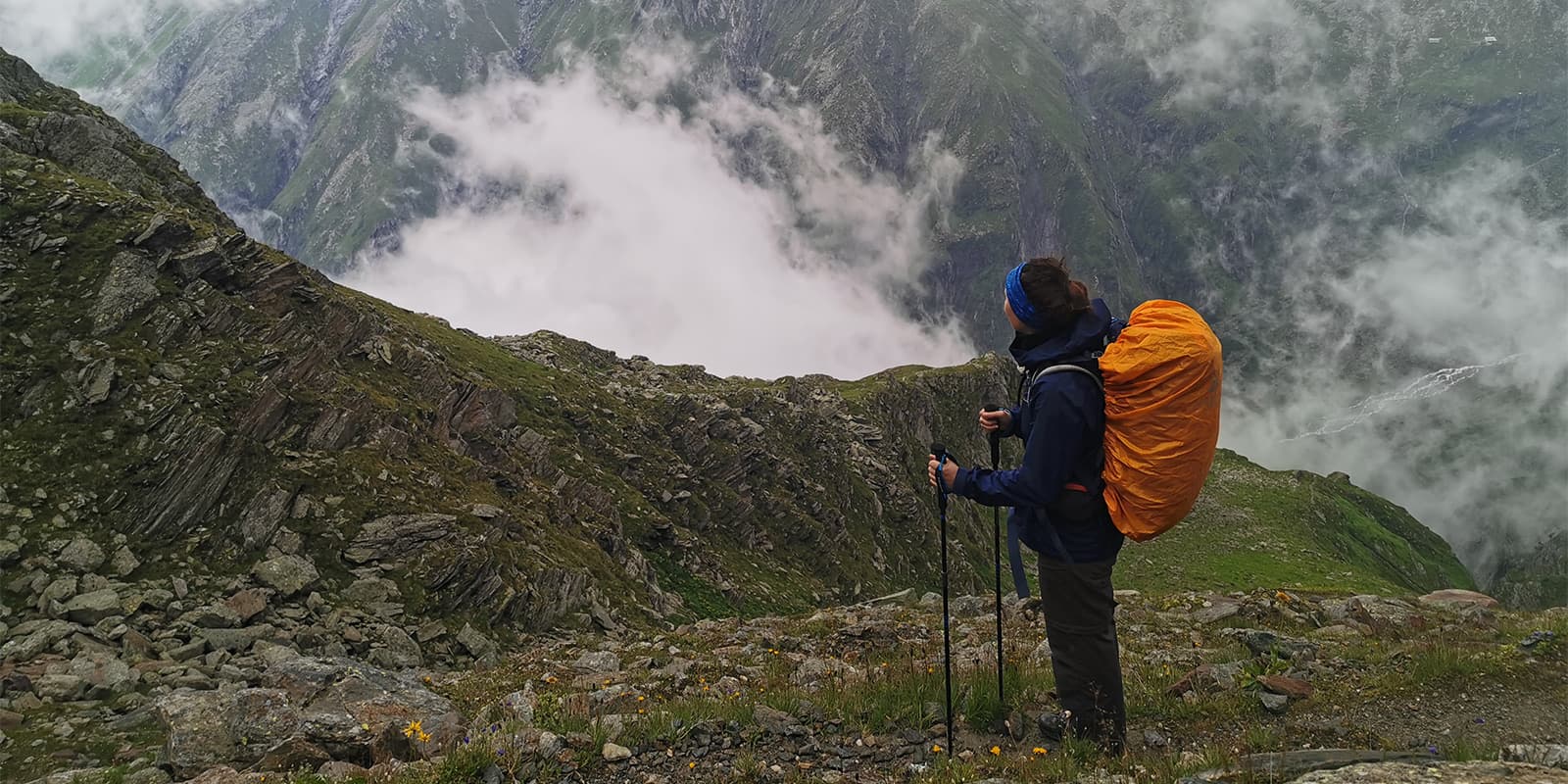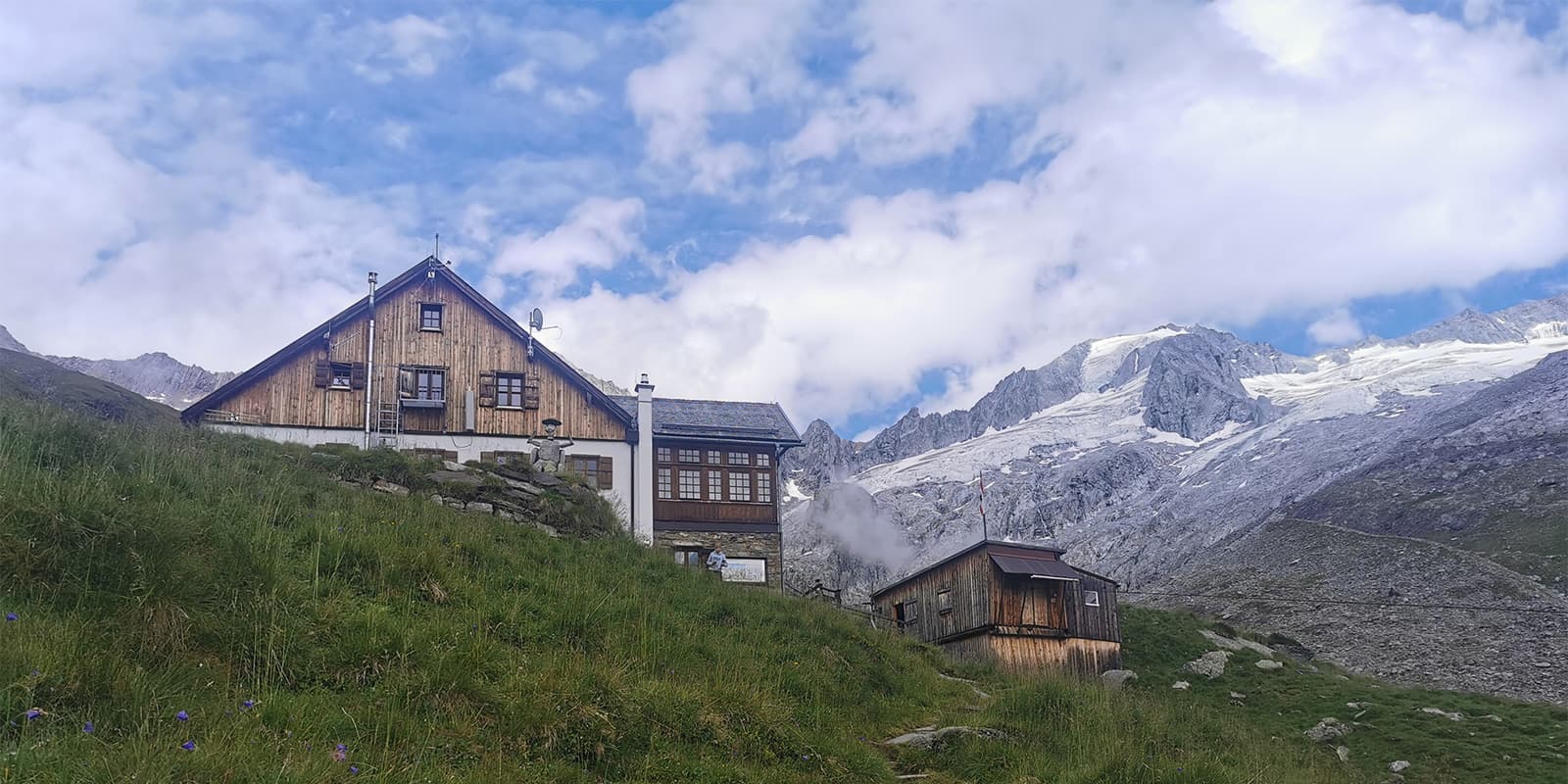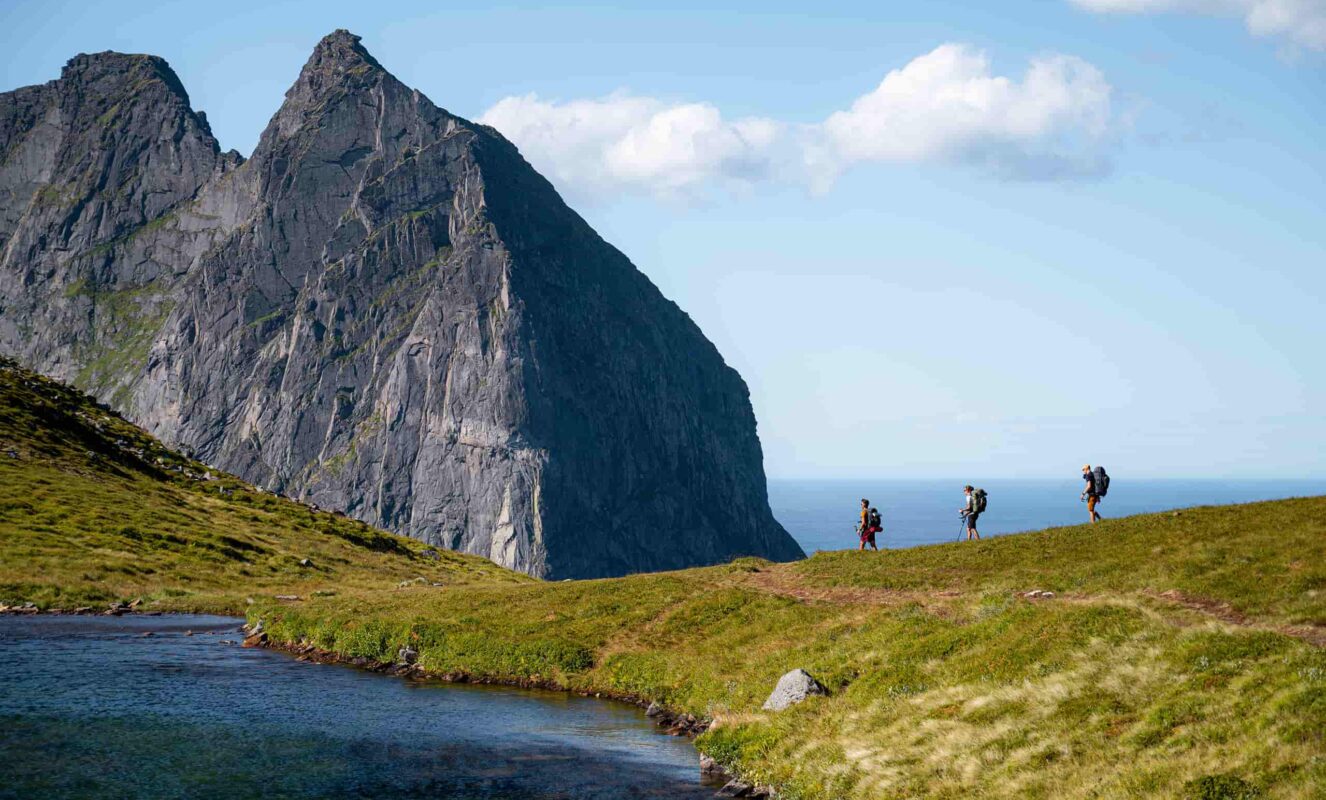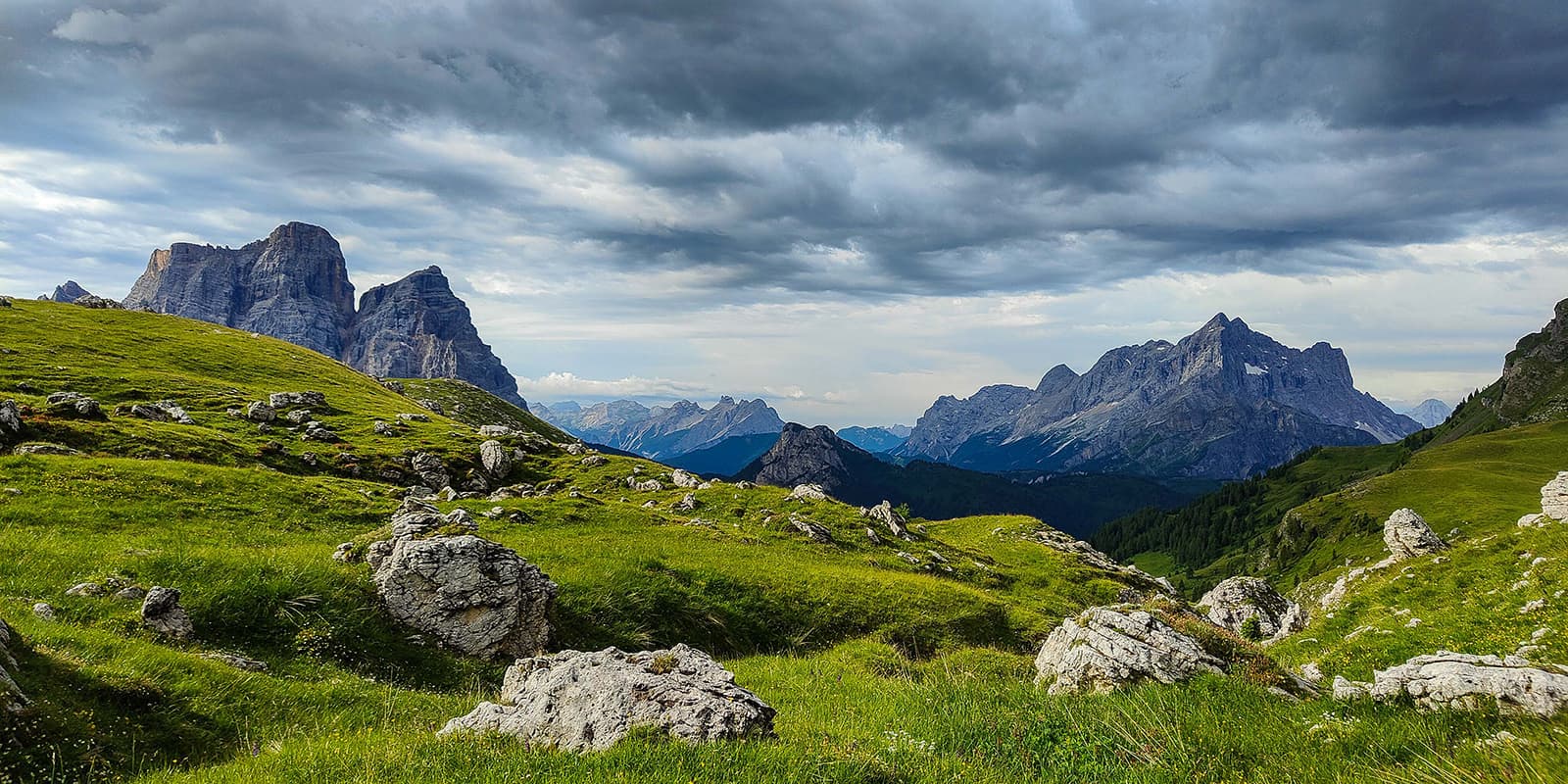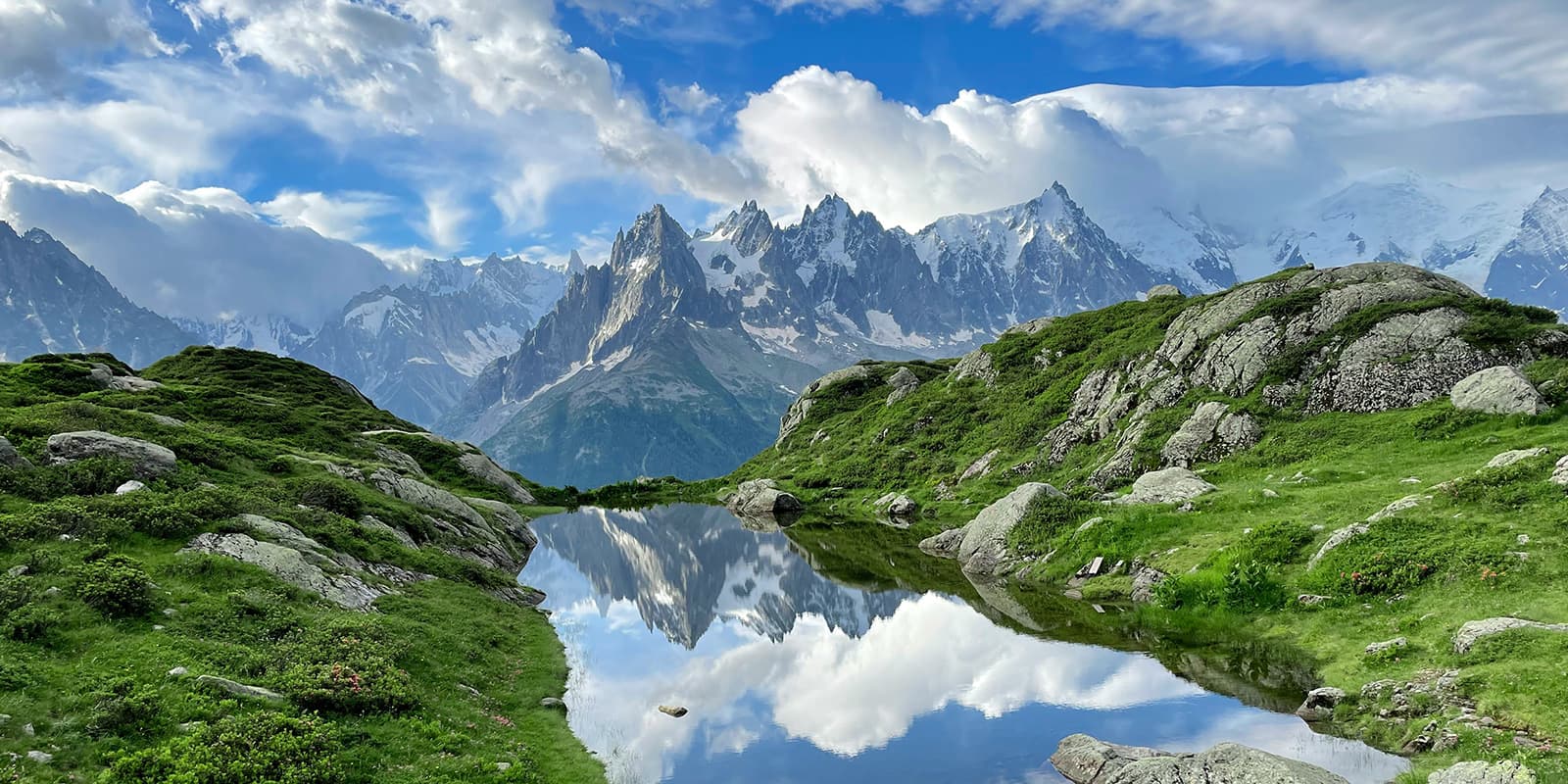The Berliner Höhenweg/ Zillertaler Runde is a challenging hike, that requires experience in alpine terrain, surefootedness, and proper equipment.
Invest in the right hiking gear, including comfortable, supportive footwear with a good grip, proper hiking clothing, such as warm base layers and a hardshell rain jacket, hiking poles, a well-fitted backpack, and essential equipment like maps, GPS devices (or the GPX on your mobile), and a first-aid kit. Check out our comprehensive gear list for long-distance trails like this.
To stay overnight in the mountain huts, bring a light sleeping bag, in addition to the provided blankets, and ear plugs for a restful night.
The weather in the high mountains can change rapidly. Always check the trail conditions and local weather forecasts, be prepared for all conditions, including rain, sun, or snow and alter your itinerary if needed.
Stay properly hydrated and nourished. Check that you have enough water and snacks to keep up your energy levels and prevent dehydration and exhaustion. Bring at least two liters of water with you each day.
Respect the principles of Leave No Trace by minimizing your impact on the environment. Stick to designated trails, take all your trash with you, and show respect for wildlife and natural habitats (keep your distance, don’t feed them).



